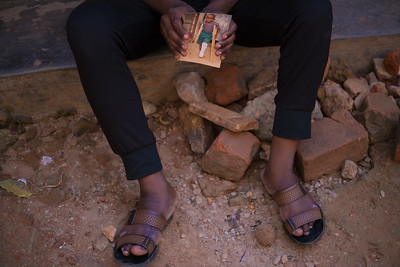The Launch of the Clubfoot Product Narrative
Quraish, 23, started his first job this year as an auditor for an economic development organization working to equip young women in Kampala’s slums with skills and resources to pursue new opportunities. He understands what a second chance, an alternate path, in life means.
Born with clubfoot, a birth defect in which one or both feet are turned inward and downward, it wasn’t until Quraish was four years old that his parents found treatment for his condition. “It changed my life forever,” he says. “I can wear shoes, run like any person can.” Now, with an accounting degree from Makerere University, he wants to pay it forward and help others realize their full potential.


Quraish is not the only one. It is estimated that clubfoot occurs in one in every 800 births, making it one of the most common congenital birth defects. And it’s highly treatable: 95 percent of cases can be corrected non-surgically before a child begins to walk.
But every year, about 4 out of 5 of those born with clubfoot—144,000 infants globally—do not receive the basic care that allowed Quraish a life without physical impairment or disability. It is well-documented that children living with severe impairments, like clubfoot, in many countries are less likely to receive an education, access health care, or benefit from employment and community opportunities throughout their lives.

Stories like his highlight the importance of adequate treatment. At an estimated US$ 500 per child, this appears not unsurmountable for governments and development partners, considering that the estimated gain in earnings during the child’s life is US$120,000. Then why is it that, when treatment is perceived affordable and feasible, more than eighty percent of children born with clubfoot in low-and middle-income countries go untreated?
No Man’s Land
The answer is multi-faceted, although there are a few major systemic barriers that need to be addressed. Adequate treatment of clubfoot involves different disciplines and departments within ministries of health, such as neonatal and child health, rehabilitation, and surgery. Understanding this and establishing collaboration frameworks between these departments, including clear roles and responsibilities, is a prerequisite to achieve proper treatment levels, but are often lacking. As a result, there is no leadership within health ministries and clubfoot is situated in a ‘no man’s land’. The lack of prioritization also exists at the global level, where congenital birth defects are not high on child health agendas and therefore not properly integrated into government policies, plans and training curricula for health workers.
A more reliable supply of quality products
When treatment programs exist, an adequate supply of all treatment materials – plaster, padding and tenotomy supplies and affordable, quality Foot Abduction Braces – is needed. The WHO and UNICEF have just recently published guidance on specifications for the procurement and production of braces and this, combined with the testing and validation of delivery models, may lead to greater availability in low-and middle-income countries. Another aspect of clubfoot treatment programmes is to ensure that children adhere to the full treatment. New technologies and solutions have been developed to deliver patient-centered care and these should be scaled faster and more widely.
Calling on development partners to act
As one of the single most effective interventions to preventing a lifelong impairment, clubfoot must be integrated into global development agendas and country policies. The 2022 Global Disability Summit in Oslo can be an opportunity to mobilize the support from key stakeholders. Under the UK-aid funded and GDI Hub led AT2030 programme, CHAI has developed a report – with the input from partners in the sector – that outlines priority interventions and can be used as a blueprint for a global response.
Every child deserves equal opportunity to fulfill his/her potential and while the case of Quraish shows that this can be achieved, it is unacceptable that millions of children and adults have long been ignored and now face the often devasting consequences.
The time is now to make change and bring children and adults into the conversation. Get involved by helping us disseminate this report and starting a conversation on the @GDIhub twitter!
References
Kuper, H., & Heydt, P. (2019). The Missing Billion: Access to Health Services for 1 Billion People with Disabilities. Missing Billion Initiative. Retrieved from https://www.themissingbillion.org/the-report-2
UNICEF. (2013) State of the World’s Children 2013: Children with Disabilities. https://www.unicef.org/publications/index_69379.html